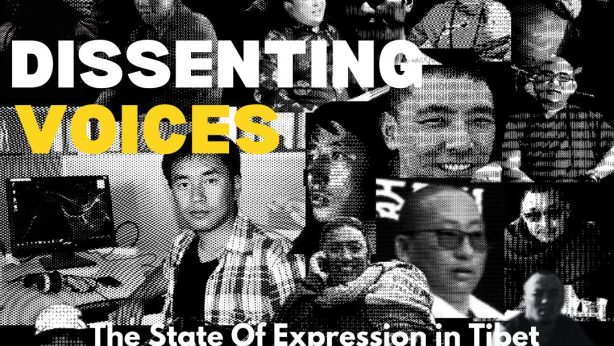Religious Repression in Tibet – 2012
The right to freedom of thought, conscience, and religion is a fundamental and universal right, first enshrined in Article 18 of the Universal Declaration of Human Rights (“UDHR”) in 1948. Despite its value to the international community, States continue to violate the right to freedom of thought, conscience, and religion across the globe. This is particularly true in Tibet, where the Chinese government – through law, policy, and practice – consistently represses the religious and other rights of the Tibetan Buddhists in the Tibetan Autonomous Region (“TAR”) and other Tibetan areas incorporated into Chinese provinces of Sichuan, Qinghai, Yunnan, and Gansu. Since 1999, the United States Commission on International Religious Freedom recommended that the People’s Republic of China be designated by the US Department of State as a “country of particular concern,” that is, a country whose government has engaged in or tolerated systematic and egregious violations of the universal right to freedom of religion or belief.In fact, the Commission considers China to be one of the most egregious violators of religious freedom.
The governing and sole party of the People’s Republic of China (“PRC”), the Communist Party of China (“CPC”) follows a Marxist, atheist ideology in which religion is considered a superstitious and unscientific product of natural and social oppression, exploited and used in backward societies to suppress the lower class and preserve social inequalities.As such, Marxism stipulates that in a socialist society in which there is no class system, religion will naturally and inevitably disappear.Consequently, the PRC appears confident that the Tibetan peoples’ religious faith and fervour will die once stronger economic and social progress is achieved.
In addition to ideological differences, the Chinese government links Tibetan Buddhism with the perceived fear of the Tibetan desire for separation from China. A strategy which, according to China, is promulgated by the Dalai Lama, the Central Tibetan Administration, and other foreign “hostile” and antiChinese forces.As a result, the Chinese government intends to “either eliminate the religious faith of the Tibetans or transform Tibet into an atheist region where the ‘communal spiritual civilisation’ will be propagated to the Tibetan people.” This is the underlying policy on which China’s religiously repressive measures in Tibet are founded.
In 2008 the Tibetan Plateau experienced a wave of protests, during which thousands of Tibetans called for religious freedom, a free Tibet, and the return of their spiritual leader His Holiness the Dalai Lama to Tibet. Since then, government control over religious practice and the management of monastic institutions has been extraordinarily tight.Many of the monks, nuns, and other political prisoners arrested during the 2008 uprising still remain in detention today. Heavy restrictions on freedom of movement and the forced relocation of nomadic communities from their grasslands to small towns, effectively cutting them off from their traditional Buddhist culture, contribute to the virtual lockdown and undeclared martial law in place in Tibet today. As the US Commission on International Freedom noted in its 2012 report, “[t]he religious freedom conditions in Tibetan Buddhist areas of China remained acute, worse now than at any time over the past decade.”
The increased restrictions have resulted in 95 protest self- immolations in Tibet.A large number of the self-immolators have been monks and nuns who could no longer bear the oppression. Tibetan Buddhist monks have been known for their patience and resilience in the face of adversity. The case of these burning protests is clear evidence that Tibetan monks have been pushed to the extreme limits of human endurance and helplessness in the face of oppressive Chinese rule. Although the Chinese government tries desperately to conceal them, numerous videos, pictures, and news of the self- immolations have been leaked into the international community. These depictions capture the self-immolators calling for “religious freedom in Tibet,” and the return of their beloved spiritual leader, His Holiness the Dalai Lama.
This report is an in-depth analysis of the internationally protected right to freedom of religion and belief, and the ways in which the government of the PRC is continuously and systematically violating it in the context of Tibetan Buddhism. The first section provides a brief history of Tibetan Buddhism in Tibet, beginning with the introduction of Buddhism in Tibet in the 5th century C.E., and ending with an account of Tibetan Buddhism in Tibet today. The second section contains a general overview of both the international and Chinese laws that pertain to the right to freedom of religion. The third section of the report describes in detail some of the most religiously oppressive measures imposed by the Chinese government on Tibetan Buddhists.
The heart of this report is the fourth section, which is an analysis of the effect of China’s oppressive laws as they pertain to the right to freedom of religion. The structure of this section is borrowed from the framework for communications presented by the United Nations Special Rapporteur on Freedom of Religion or Belief.This framework most accurately incorporates the distinct yet interrelated issues that comprise the right to freedom of religion or belief. As such, the section is divided into five categories: the elements of the right to freedom of religion or belief and the right to manifest one’s religion or belief; discrimination based on religion or belief; vulnerable groups whose right to freedom of religion requires special attention; the intersection of freedom of religion and other human rights; cross-cutting issues relating to the right to freedom of religion or belief, including limitations and derogations.11 The last section draws the issues discussed in the report together in the form of recommendations to the People’s Republic of China, the United Nations, and the international community as a whole.
Click here to read the full report on “Religious Repression in Tibet – 2012”


